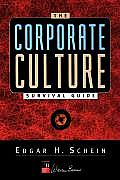 The Corporate Culture Survival Guide: Sense and Nonsense About Culture Change
The Corporate Culture Survival Guide: Sense and Nonsense About Culture Change
by Edgar Schein
Jossey-Bass, 1999
Clients often come to me knowing that something needs to change in order to achieve better performance, but they just aren’t sure what. The specific answer will vary for each client, but more often than not, the area for change lies buried deep within the organization’s culture, and that why it was hard for them to see. In The Corporate Culture Survival Guide (affiliate link), Edgar Schein provides an insightful discussion of organizational culture that can help leaders see what they have been missing. The book is particularly powerful because it focuses not only on the mystery of how culture works but also on the practical aspects of how to deal with and change culture when it gets in the way of performance.
Schein starts by helping leaders understand the depth and power of organizational culture. Culture goes beyond aspects that you can see (e.g., office layout) and even what people tell you (espoused values) and lands squarely in the often unspoken but shared assumptions people have about the way things “really” work in the organization. He even provides the template for uncovering these shared assumptions through a simple process of a few facilitated focus groups.
Most of the book, however, talks specifically about approaches to changing culture, which will vary depending on where in the life cycle of organizations the company resides. In relatively new companies in the “start up” stage, culture can evolve or transform relatively quickly and is usually tied personally to the values of the company founders. In more mature companies, however, the culture is more entrenched (after all, it is elements of that culture that produced the success that allowed the company to become mature), and change efforts require a concerted effort involving multiple levels of the organization. He even has a chapter devoted specifically to cultural implications of mergers and acquisitions.
The book is filled with small “practical application” sections written specifically for leaders and managers who might be reading the book for application to performance issues in their own organization. And performance is the key. Schein makes it clear that addressing or changing organizational culture merely for culture’s sake is a huge mistake. The only reason to address culture is because there is a performance need. In fact, he argues, you cannot actually “create” a new culture. You merely change behaviors and attitudes that—if successful—will become part of a new culture.
Schein also concludes each chapter with a “bottom line” section that clearly summarizes the important points. Although Schein’s forty plus years of experience as a consultant and academic add value to what he is saying, he says it in a way that works well for a busy executive. The book is less than two hundred pages and would be valuable for any leader who needs to address performance issues in her or his organization.
